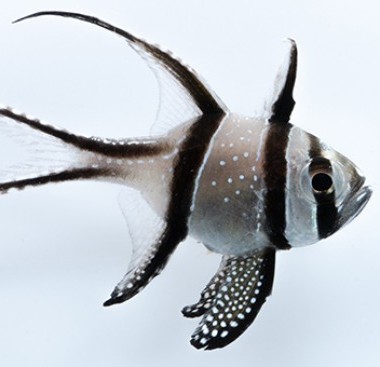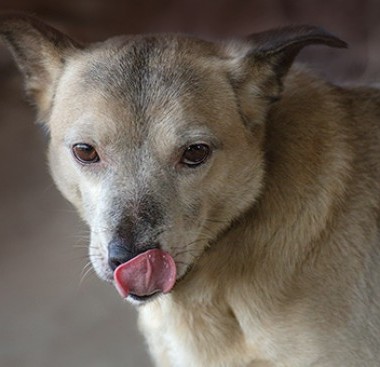Ohio Valley Dog Owners Help Write New Law Cincinnati Ends Long-time Breed Ban
By: Staff Date: 01/10/2012 Category: | Animal Legislation |
Cincinnati dog owners had plenty to celebrate on Thanksgiving. The day before the holiday, Cincinnati City Council unanimously overturned the Queen City's 13-year-old ban on American Staffordshire Terriers and Staffordshire Bull Terriers and replaced the breed-specific law with a generic dangerous dog ordinance written in part by Ohio Valley Dog Owners Inc., an NAIA affiliate.
The new law requires that vicious dogs - those that attack and seriously injure people, are trained for fighting, belong to the breed known as pit bull dog, or have been used in the commission of a crime - be photographed and registered with the police department, permanently identified with tattoos and microchips, and housed in locked pens with a lid when not in a house or on a leash. In addition, owners of vicious dogs must purchase $50,000 liability insurance. Dangerous dogs - those that, when off the owner's property, menace people or show a propensity to attack - must also be registered and tattooed, but they will have the opportunity to earn their way back into the city's good graces if the owner takes steps to assure its good behavior. Dangerous dogs must also meet some of the registration and housing requirements.
Owners are limited to one vicious dog and three dangerous dogs. The vote was a long time coming; the task force to draft a comprehensive animal control law was appointed in December 1996 and convened in early 1997. Led by Carol Walker, assistant to the Cincinnati Safety Director, member of two area kennel clubs, and AKC legislative liaison for the Bouvier des Flandres Club of America, the task force of city and county government representatives, OVDO, Cincinnati Kennel Club, and the Cincinnati Veterinary Medical Association reviewed animal control laws from more than 20 other jurisdictions before drafting their proposal. Then they waited for the city's law department to write the legal language and approve the content of the measure. Other city projects took precedence, so the wait stretched on . and on. Finally, with a push from City Councilman Tyrone Yates, the council law and safety committee heard the bill in September 1999.
History
The breed ban was proposed in 1986 and passed in 1987 after several attacks by dogs identified as pit bulls. Members of local dog clubs fought the proposal, but a child was killed by one of these dogs and the ban was passed by politicians anxious to impress the public with their response to a community threat. AmStaffs and Staffordshire Bull Terriers and their mixes were proscribed by name in the law, but in practice, every dog with a similar appearance was targeted.
For the first nine years of the ordinance, enforcement was haphazard. Then, in 1996, the city contracted with the county animal shelter to house dogs impounded in violation of the law, and enforcement snowballed. All dogs that looked like the banned breeds were impounded, and population at the shelter sometimes exceeded 50 dogs while cases were pending. Judges often allowed owners to reclaim their dogs if they paid the fine and promised to get their pets out of the city. Dogs with poor temperaments and dogs belonging to owners convicted of crimes were euthanized.
Many of the dogs objected to incarceration and damaged the kennel runs, increasing the cost of boarding. The city's bills mounted and police, prosecutor, and court time added to the expenses.
The task force work was aided by a case in which nine dogs were impounded as AmStaff mixes and carted off to the shelter. The owner declined to plead guilty and remove the dogs from the city; he claimed they were American Bulldogs, not one of the banned breeds or mixes, and presented paperwork on some of the dogs to prove his contention.
The case went to trial; the chief deputy dog warden said that in 10 years on the job he had never mis-identified any of the banned breeds or mixes. After two days of testimony, the judge went to the shelter to see the dogs. Without ruling on the breed, he said that the dogs were no threat to the community and found the owner not guilty of violating the breed-specific law. The nine dogs spent a month in the shelter, the prosecutor spent hours preparing witnesses and researching the case, and the court was tied up for two days and part of a third.
New law
has serious flaw The city is not allowed to write laws that are less strict than state laws, so all dogs identified as pit bull dogs in Cincinnati must be registered and housed as vicious dogs in accordance with the state statute that lumps "dogs commonly known as pit bull dogs" in its definition of vicious dogs.
Although the state law does not specify AmStaffs, Staffordshire Bull Terriers, American Pit Bull Terriers, American Bulldogs, or any other dogs that could be included as "pit bull type," some dog wardens consider these purebreds to come under the state law. The dog warden who covers Cincinnati does not include the purebreds among the inherently vicious dogs, but many other animal control officials lump all the dogs together by type.
This dichotomy in identification will take on more serious overtones if HB 350 passes the legislature. Introduced by Representative Lynn Olman, HB 350 criminalizes debarking surgery on a vicious dog. Olman introduced the bill at the behest of Lucas County (Toledo) Dog Warden Tom Skeldon after two incidents in which silent pit bulls attacked police officers who were conducting investigations. Skeldon is one of the dog wardens who considers purebred dogs to fall under the state definition.
The potential for uneven application of the HB 350 affects both pet owners and veterinarians. Owners of purebreds will be denied a remedy for barking problems if they live in a county that includes their dogs in the definition of pit bull, and veterinarians in those counties will be open to criminal charges if they do the surgery.
So far, Olman has been reluctant to accept changes that would target only those dogs involved in other criminal activity. With these contradictions in mind, Ohio Valley Dog Owners has suggested alternative language to HB 350 and will work with Canine Friends of Cleveland on legislation to drop "pit bull dog" from the state law definition of vicious dog.
About The Author
All Authors Of This Article: | Norma Bennett Woolf |












